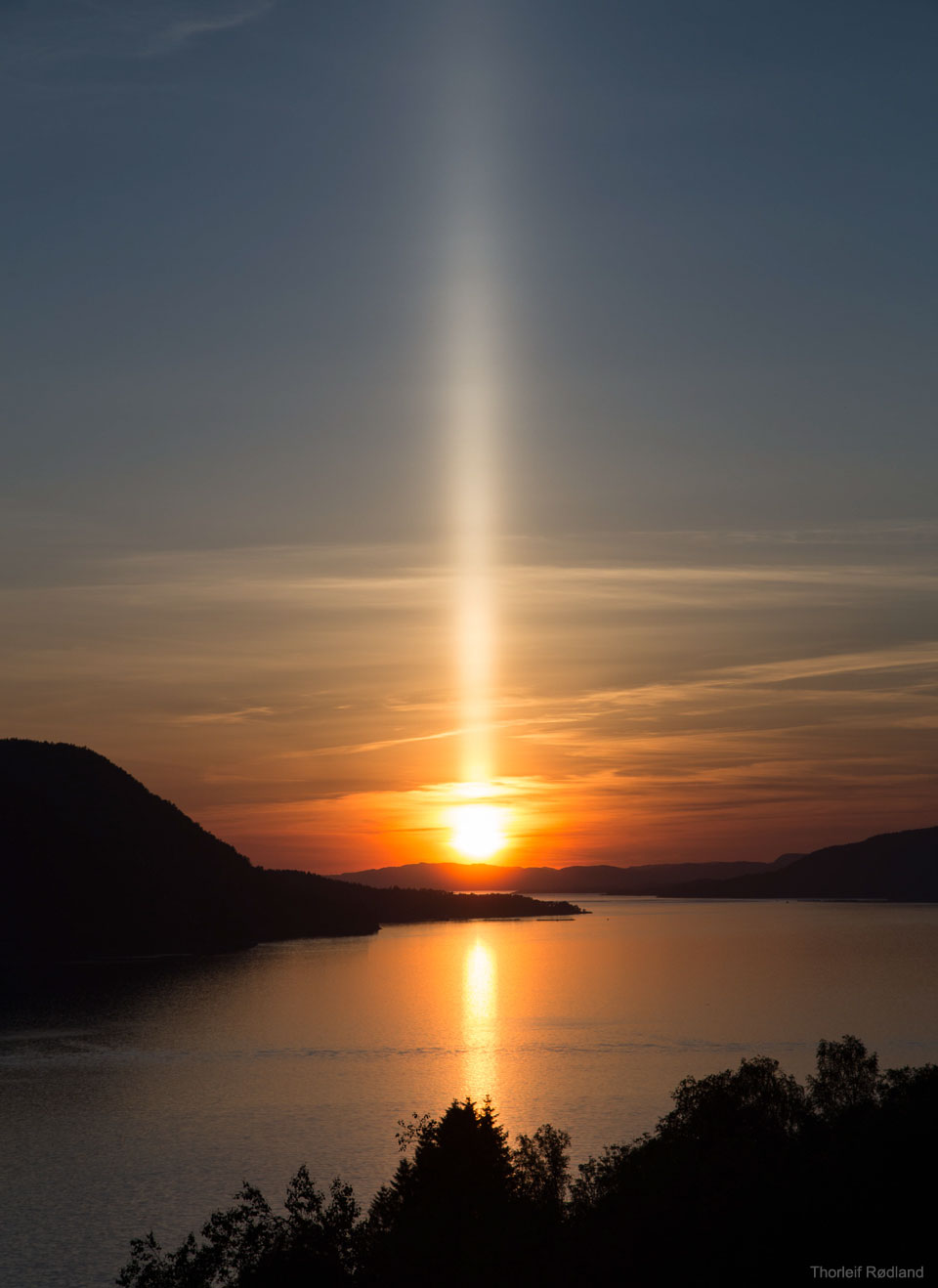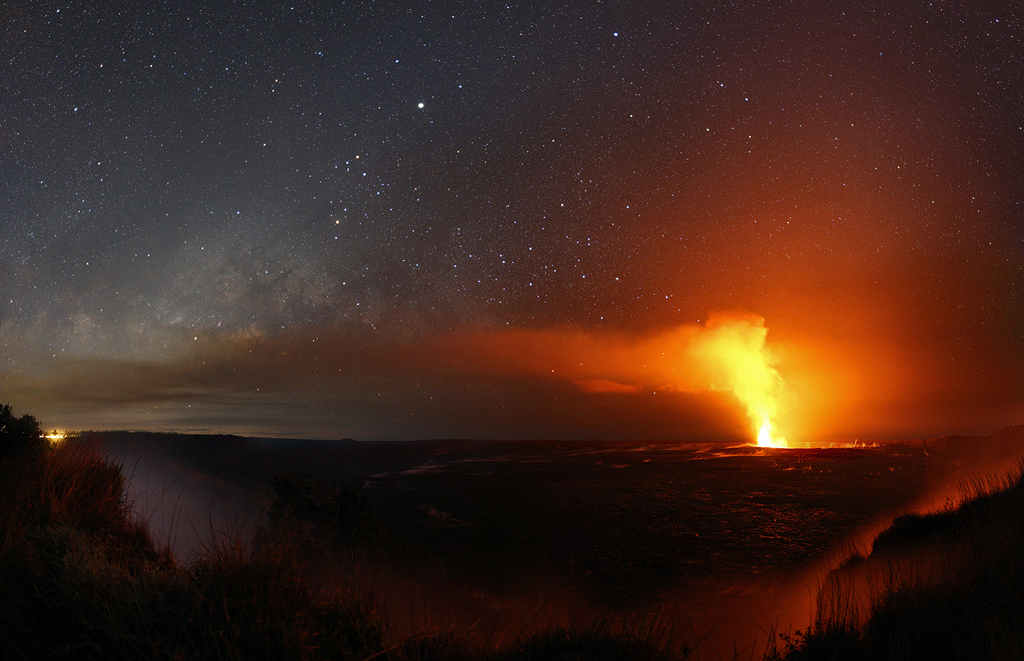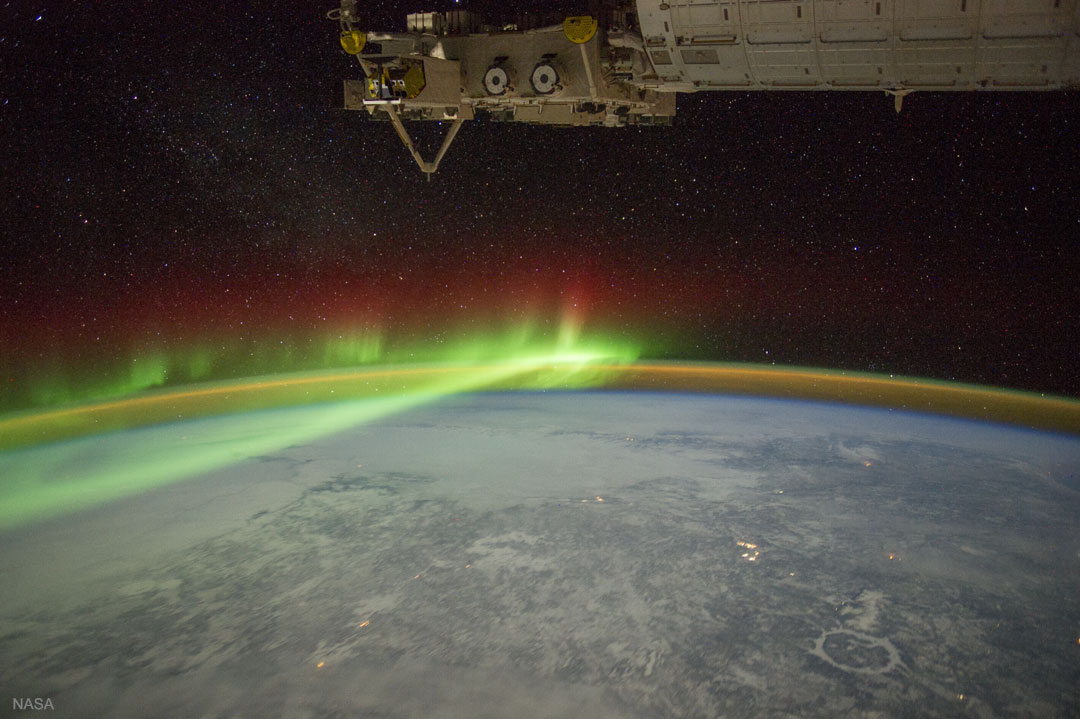"Barcarolle"
Nombre total de pages vues
07/06/2018
A Sun Pillar over Norway - Astronomy picture of the day - 2018 June 7

Image Credit: Thorleif Rødland
Explanation: Have you ever seen a sun pillar? When the air is cold and the Sun is rising or setting, falling ice crystals can reflect sunlight and create an unusual column of light. Ice sometimes forms flat, six-sided shaped crystals as it falls from high-level clouds. Air resistance causes these crystals to lie nearly flat much of the time as they flutter to the ground. Sunlight reflects off crystals that are properly aligned, creating the sun-sun-pillar effect. In the featured picture taken last week, a sun-pillar reflects light from a Sun setting over Fensfjorden, Norway.
05/06/2018
Complex Jupiter - Astronomy picture of the day - 2018 June 5

Image Credit: NASA, Juno, SwRI, MSSS; Composition: David Marriott
Explanation: How complex is Jupiter? NASA's Juno mission to Jupiter is finding the Jovian giant to be more complicated than expected. Jupiter's magnetic field has been discovered to be much different from our Earth's simple dipole field, showing several poles embedded in a complicated network more convoluted in the north than the south. Further, Juno's radio measurements show that Jupiter's atmosphere shows structure well below the upper cloud deck -- even hundreds of kilometers deep. Jupiter's newfound complexity is evident also in southern clouds, as shown in the featured image. There, planet-circling zones and belts that dominate near the equator decay into a complex miasma of continent-sized storm swirls. Juno continues in its looping elliptical orbit, swooping near the huge planet every 53 days and exploring a slightly different sector each time around.
04/06/2018
Le Cosmographe - Une superbe vue de Mars pour les 15 ans de Mars Express - Espace
2 juin 2003, Mars Express quittait la Terre pour foncer vers la planète rouge. Son objectif ? Cartographier Mars. Quinze ans plus tard, et quelque 18.000 orbites autour de la planète, la sonde européenne continue d’épier sans relâche et sa surface et son atmosphère, du moins ce qui lui en reste. Située à quelques encablures de la Terre — à noter que le 27 juillet 2018, elle ne sera qu’à 58 millions de kilomètres de nous —, Mars n’a de cesse d’attirer l’espèce humaine. Pour l’instant, nous envoyons des robots éclaireurs, mais beaucoup brulent d’envie de fouler son sol poussiéreux (on s’en rapproche).
http://www.lecosmographe.com/blog/une-superbe-vue-de-mars-pour-les-15-ans-de-mars-express/
Jupiter Season, Hawaiian Sky - Astronomy picture of the day - 2018 June 4

Image Credit & Copyright: Tunç Tezel (TWAN)
Explanation: Volcanic activity on the Big Island of Hawaii has increased since this Hawaiian night skyscape was recorded earlier this year. Recent vents and lava flows are about 30 kilometers to the east, the direction of the blowing smoke and steam in the panoramic view of the Kilauea caldera with Halemaumau crater taken from Volcanoes National Park. Still, this year Jupiter is bright in late spring to early summer skies. High in the south it is easily the brightest celestial beacon in the scene where the central bulge of the Milky Way seems to rise above vapors and clouds. Yellowish Antares is the bright star near the end of the dark rivers of dust seen toward the center of our galaxy. Near the horizon, stars Alpha and Beta Centauri and the compact Southern Cross shine through the almost too bright volcanic smoke.
31/05/2018
NGC 6744 Close Up - Astronomy picture of the day - 2018 May 31

Image Credit: NASA, ESA, and the LEGUS team
Explanation: Beautiful spiral galaxy NGC 6744 is nearly 175,000 light-years across, larger than our own Milky Way. It lies some 30 million light-years distant in the southern constellation Pavo, its galactic disk tilted towards our line of sight. This Hubble close-up of the nearby island universe spans about 24,000 light-years across NGC 6744's central region in a detailed portrait that combines visible light and ultraviolet image data. The giant galaxy's yellowish core is dominated by the visible light from old, cool stars. Beyond the core are pinkish star forming regions and young star clusters scattered along the inner spiral arms. The young star clusters are bright at ultraviolet wavelengths, shown in blue and magenta hues.
30/05/2018
Aurora and Manicouagan Crater from the Space Station - Astronomy picture of the day - 2018 May 30

Image Credit: NASA
Explanation: How many of these can you find in today's featured photograph: an aurora, airglow, one of the oldest impact craters on the Earth, snow and ice, stars, city lights, and part of the International Space Station? Most of these can be identified by their distinctive colors. The aurora here appears green at the bottom, red at the top, and is visible across the left of image. Airglow appears orange and can be seen hovering over the curve of the Earth. The circularManicouagan Crater in Canada, about 100 kilometers across and 200 million years old, is visible toward the lower right and is covered in white snow and ice. Stars, light in color, dot the dark background of space. City lights appear a bright yellow and dot the landscape. Finally, across the top, part of the International Space Station (ISS) appears mostly tan. The featured image was taken from the ISS in 2012.
27/05/2018
Coronal Rain on the Sun - Astronomy picture of the day - 2018 May 27
Video Credit: Solar Dynamics Observatory, SVS, GSFC, NASA; Music: Thunderbolt by Lars Leonhard
Explanation: Does it rain on the Sun? Yes, although what falls is not water but extremely hot plasma. An example occurred in mid-July 2012 after an eruption on the Sun that produced both a Coronal Mass Ejection and a moderatesolar flare. What was more unusual, however, was what happened next. Plasma in the nearby solar corona was imaged cooling and falling back, a phenomenon known as coronal rain. Because they are electrically charged, electrons,protons, and ions in the rain were gracefully channeled along existing magnetic loops near the Sun's surface, making the scene appear as a surreal three-dimensional sourceless waterfall. The resulting surprisingly-serene spectacle is shown in ultraviolet light and highlights matter glowing at a temperature of about 50,000 Kelvin. Each second in the featured time lapse video takes about 6 minutes in real time, so that the entire coronal rain sequence lasted about 10 hours. Recent observations have confirmed that that coronal rain can also occur in smaller loops for as long as 30 hours.
26/05/2018
Boeing assemble le 777X, avion civil à l'extrémité des ailes repliable - Aeronautique - Article
![[Vidéo] Boeing assemble le 777X, le premier avion civil à l'extrémité des ailes repliable](https://www.usinenouvelle.com/mediatheque/4/8/5/000657584_image_896x598/777x-boeing.jpg)
L’assemblage des ailes des futurs Boeing 777X a débuté. Pour cette partie assez particulière de l’appareil, le constructeur aéronautique américain s’est fait remarqué en révélant un concept d’avion dans lequel l’extrémité des ailes pourrait se plier et se déplier.
Une première dans l’aviation civile, même si le procédé a déjà été utilisé sur des engins militaires comme le F-18. Dans une vidéo filmée à l’intérieur de son usine d’Everett, dans l'État de Washington (États-Unis), Boeing dévoile des étapes de construction de l’avion.
En dépliant l’extrémité de ses ailes, l’envergure de l’appareil passera de 65 à 73 mètres, faisant du 777X l’appareil le plus large de Boeing devant le 747-8. En plus d’être repliables, les ailes du 777X sont faites de fibre de carbone, un matériau plus solide et plus léger que l’aluminium.
A quoi sert exactement cette innovation ? En tout cas pas à battre des ailes tel un oiseau. La raison du dispositif est beaucoup plus pragmatique : il s’agit de réduire l’envergure de l’appareil pour lui permettre de circuler dans les aéroports sans aménagement spécifique.
Usine Nouvelle - France
Dueling Bands in the Night - Astronomy picture of the day - 2018 May 26

Image Credit & License: Ruslan Merzlyakov (RMS Photography)
Explanation: What are these two bands in the sky? The more commonly seen band is the one on the right and is the central band of our Milky Way galaxy. Our Sun orbits in the disk of this spiral galaxy, so that from inside, this diskappears as a band of comparable brightness all the way around the sky. The Milky Way band can also be seen all year -- if out away from city lights. The less commonly seem band, on the left, is zodiacal light -- sunlight reflected from dust orbiting the Sun in our Solar System. Zodiacal light is brightest near the Sun and so is best seen just before sunrise or just after sunset. On some evenings in the north, particularly during the months of March and April, this ribbon ofzodiacal light can appear quite prominent after sunset. It has recently been determined that zodiacal dust was mostly expelled by comets that have passed near Jupiter. Only on certain times of the year will the two bands be seen side by side, in parts of the sky, like this. Here the two streaks of light appear like the continuation of the banks of the Liver River into the sky. The featured panorama of consecutive exposures was recorded in North Jutland, Denmark.
Inscription à :
Commentaires (Atom)
ASTRONOMY - Jupiter Abyss
2024 November 3 Jupiter Abyss Image Credit: NASA , Juno , SwRI , MSSS ; Processing & License : Gerald Eichstädt & Sean Dor...

-
2022 September 26 All the Water on Planet Earth Illustration Credit: Jack Cook, Adam Nieman, Woods Hole Oceanographic Institution ; Data ...
-
2025 May 11 The Surface of Venus from Venera 14 Image Credit: Soviet Planetary Exploration Program , Venera 14 ; Processing & Copyri...